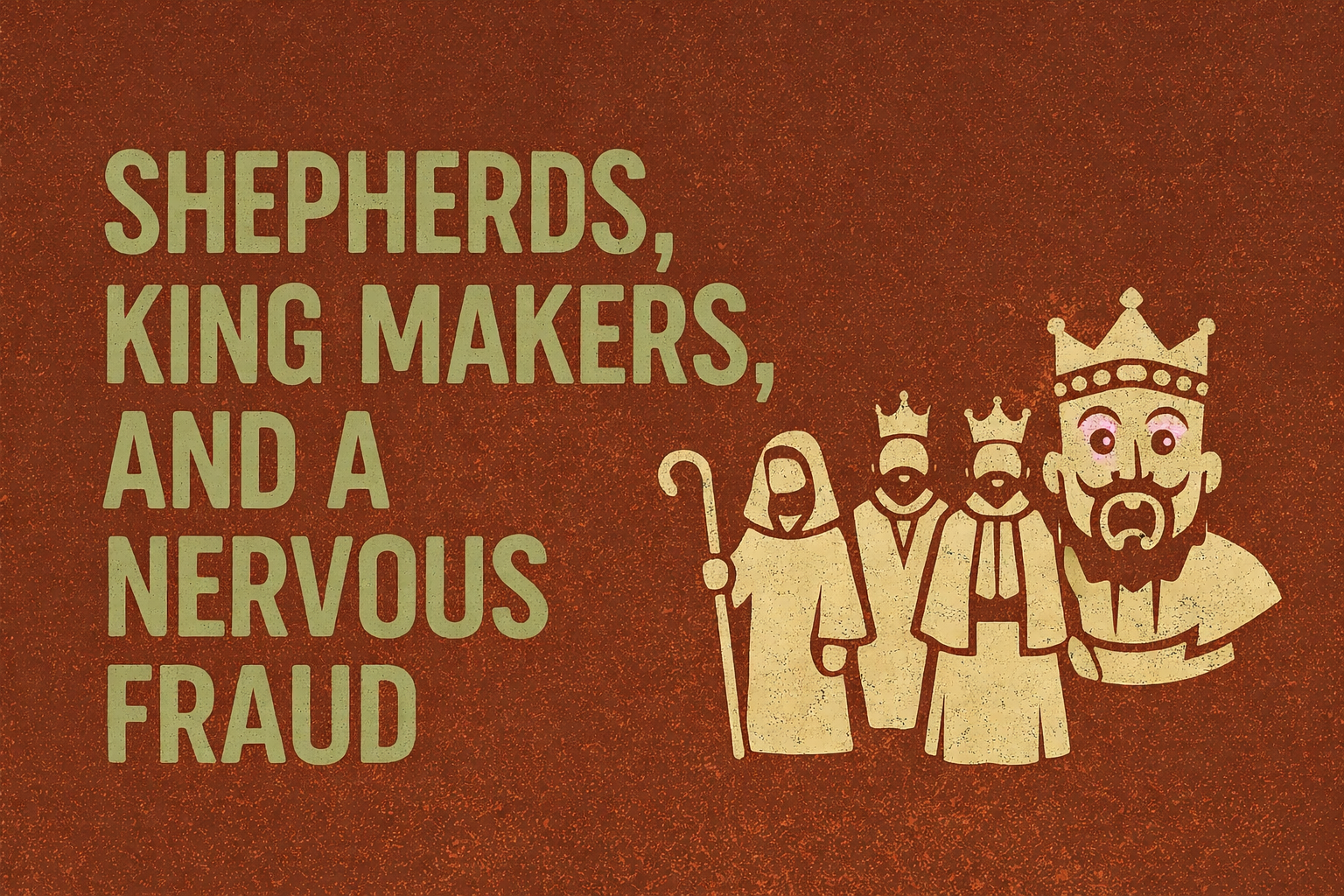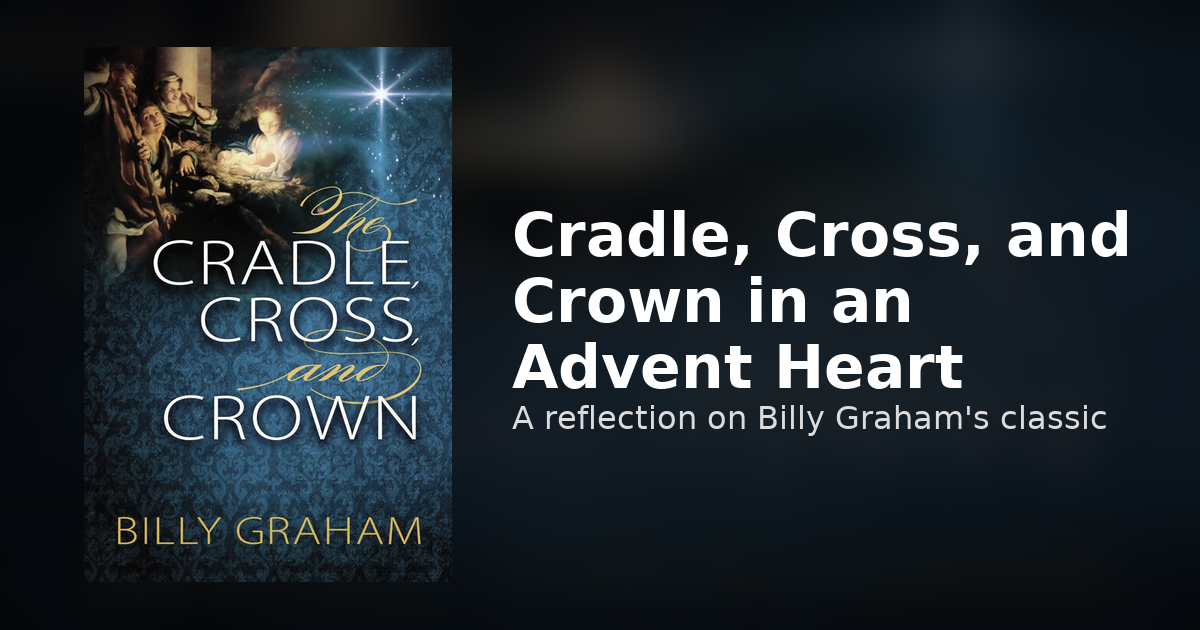Billy Graham’s little book The Cradle, Cross, and Crown is a gentle but clear invitation to start Advent with your eyes fixed on Jesus rather than on your calendar. It is only a small booklet, yet it manages to walk you through the whole story of Christ from Bethlehem to Calvary to the throne, and it does so in a way that fits very naturally at the beginning of the Christmas season.
A Simple Guide to the True Christmas Story
The Cradle, Cross, and Crown gathers together a classic Christmas message from Billy Graham, along with Scripture readings from the birth narratives, familiar carols, and short poems by Ruth Bell Graham.
You do not feel as if you are reading a long theological work. You feel as if a seasoned pastor is sitting beside you with an open Bible, helping you notice again what you already know but easily forget. Heaven has come down. God has taken on flesh. The baby in the manger is already on a path that leads to a wooden cross and then to a victorious crown. Graham writes that Jesus is the only person in history who was born with the purpose of dying, a line that captures the whole heart of the booklet.
For an Advent reading rhythm, this format works very well. You can read it in one sitting, but it may be better to sit with a section at a time across the first weeks of Advent, letting each part deepen your focus on Christ.
Cradle, Cross, and Crown as an Advent Lens
At the beginning of Advent, we are usually drawn to the cradle. We picture Mary and Joseph, the shepherds, the angels. Graham welcomes that, but he refuses to let the story stop at the stable.
- The cradle reminds us of the humility of God. Jesus enters the world in weakness and poverty. Advent becomes a call to embrace smallness, to welcome Christ into ordinary places, and to pay attention to those the world overlooks.
- The cross reminds us that the child was born to bear sin. The joy of Christmas is never sentimental in this message. The manger is already under the shadow of Calvary. That keeps Advent honest. We prepare our hearts not only with nostalgia but with repentance, gratitude, and fresh trust in the finished work of Christ.
- The crown lifts our eyes to the risen and reigning Lord. The story is not only about the past. The King who came in humility will come again in glory. Advent becomes a season to renew our hope, to remember that history is going somewhere under the rule of Christ.
Seen together, these three images cradle, cross, crown keep the season from shrinking into either warm feelings or vague spirituality. They pull the whole gospel into view.
Lessons for Preparing our Hearts at the Start of Advent
Reading The Cradle, Cross, and Crown at the beginning of Advent suggests several very practical lessons.
First, Let Advent Slow You Down.
Graham is very aware of the noise of the season. The descriptions of holiday parties, shopping, and family pressures could have been written yesterday.
The booklet invites you to step out of that stream for a moment and simply sit with the story. A simple response is to build in a daily pause in these early Advent days. Light a candle, read one of the Scriptures included, pray a short prayer of welcome to Christ. Let the truth sink in before the to do list starts to speak.
Second, Remember that the Manger Stands in the Shadow of the Cross.
Graham keeps circling back to the purpose of Christ’s coming. Jesus did not arrive only to inspire us or to give us a set of seasonal virtues. He came to save sinners through his death and resurrection. That shift in focus changes how we enter December. Instead of asking only how to make the holidays meaningful, we ask how to receive again the grace that has already been given. Confession, forgiveness, and reconciliation become part of our preparation, not just decorations and menus.
Third, Live Today in the Light of the Crown.
When you remember that the baby of Bethlehem is also the King who will return, Advent becomes a season of hope and mission. The crown reminds us that injustice will not have the last word, that sorrow and death are not permanent, and that our work in Christ is never wasted. That future hope can soften some of the ache many people feel at Christmas. It can also nudge us toward intentional acts of mercy and witness during the season, knowing that we serve a living and reigning Lord.
Fourth, Make Your Home a Place of Worship, Not Only Celebration.
Because the booklet weaves together Scripture, carols, and poetry, it is easy to adapt it for family or small group use.
You might choose one carol and one Scripture reading each week of Advent. Read them aloud. Sing or speak the words together. Ask a simple question such as “What does this tell us about who Jesus is” or “How can we respond to him this week.” This turns Advent from something you watch at church into something you practice in your living room.
The Cradle, Cross, and Crown is not a heavy academic study, and it is not meant to be. It is short, clear, and pastoral. That is part of its strength. It is accessible for new believers and still nourishing for long time Christians because it keeps the focus on the person and work of Christ.
If there is a limitation, it is only that the brevity may leave some readers wishing for more space to explore particular themes or texts in depth. But as an Advent doorway, that is not really a drawback. The booklet works best as a starting point. It nudges you back into the Gospels, into worship, and into prayer.
At the beginning of the Advent season, when you are just starting to turn your heart toward Christmas, Billy Graham’s The Cradle, Cross, and Crown offers a simple but rich path. It helps you remember that the child in the cradle came for the cross and now wears the crown.
If you let that pattern shape these early days of Advent, you will find yourself less captured by the rush and more captured by Christ. You will move toward Christmas with a quieter heart, a deeper gratitude for the cross, and a steadier hope in the King who has come and will come again.





